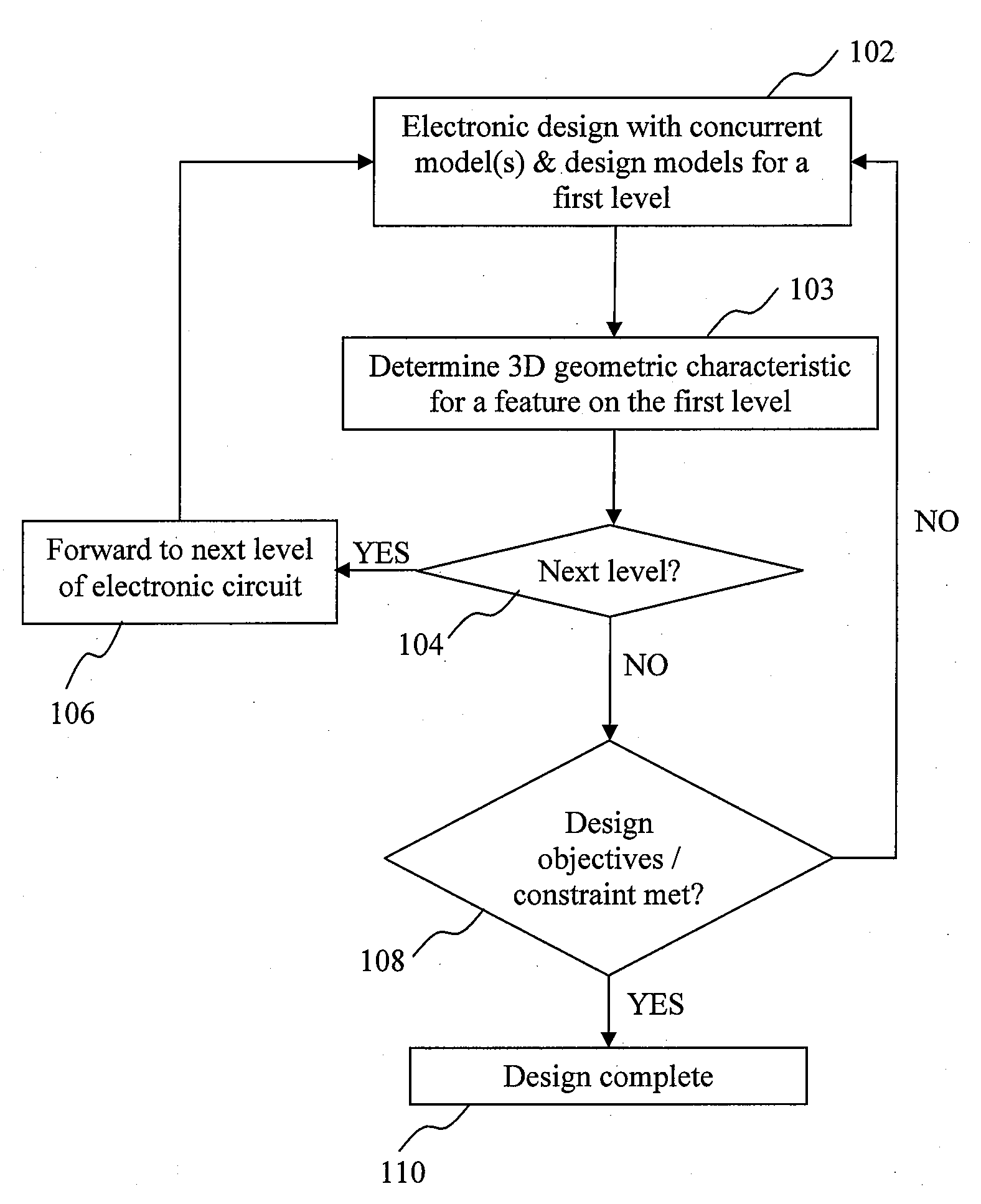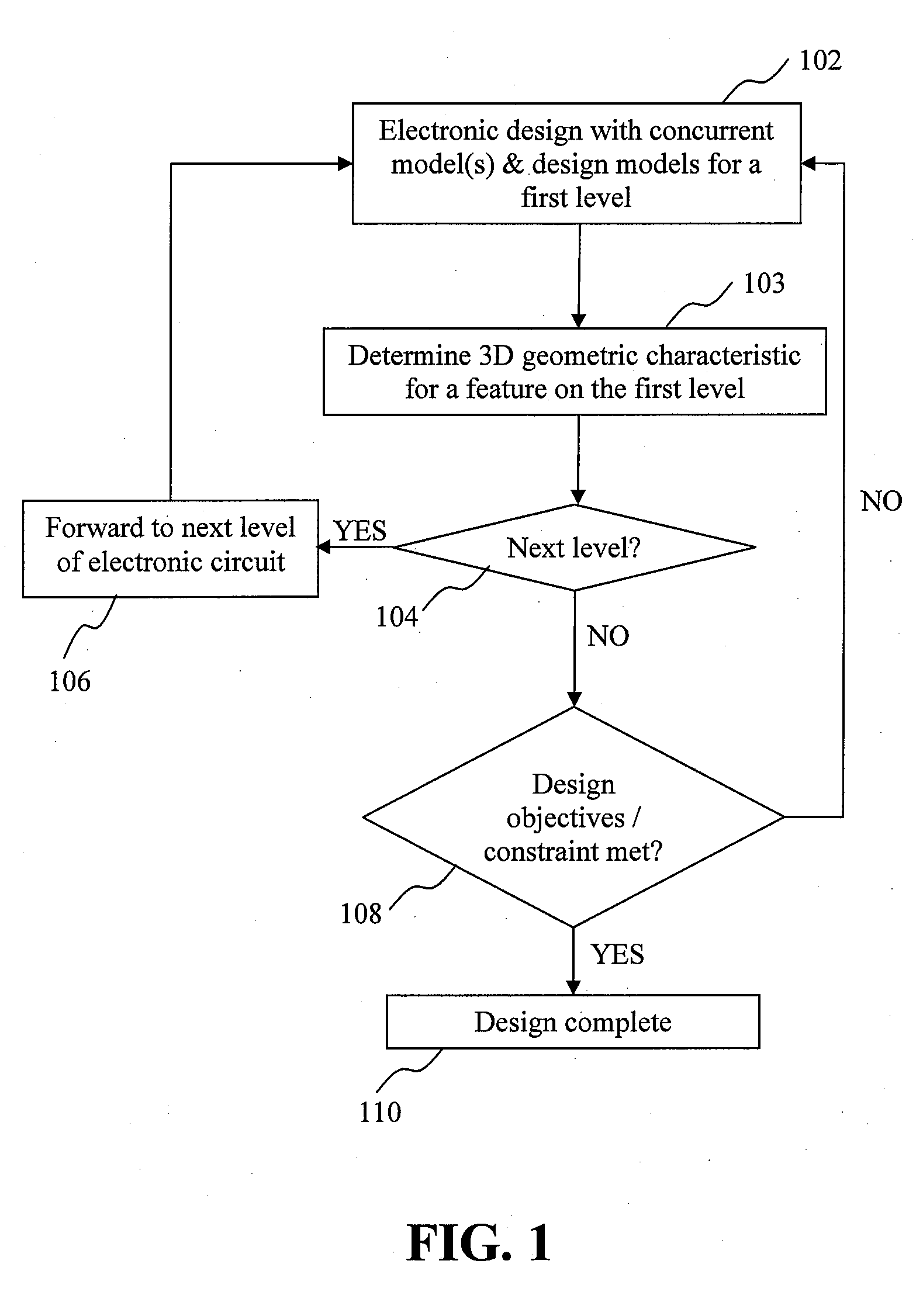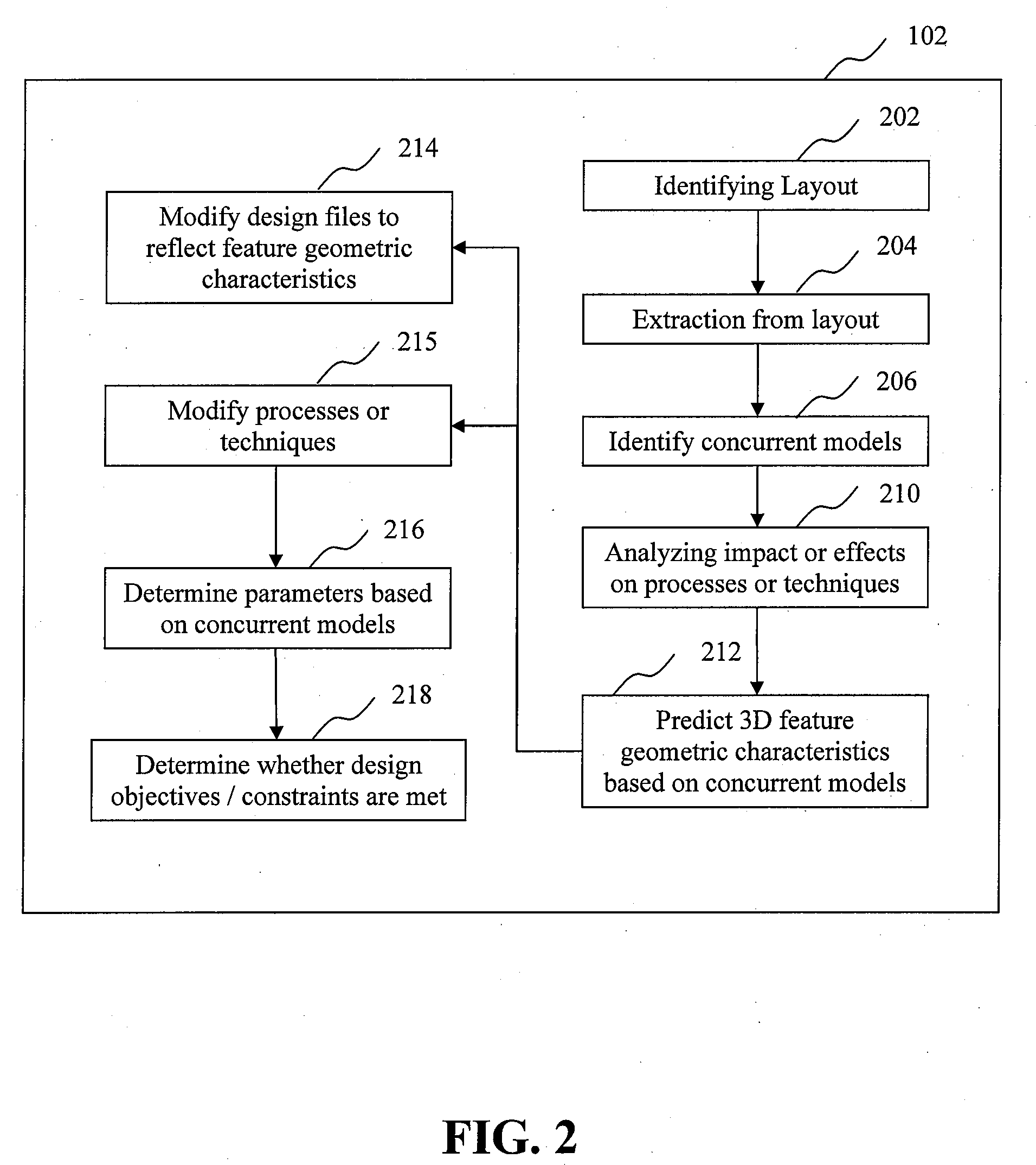Method, system, and computer program product for determining three-dimensional feature characteristics in electronic designs
a technology of electronic designs and feature characteristics, applied in the field of three-dimensional feature characteristics determination of computer program products, can solve the problems of increasing the r-c time constant, increasing the delay caused by the increased r-c time constant, and aggravate the electro-migration problem by using low-k dielectric materials
- Summary
- Abstract
- Description
- Claims
- Application Information
AI Technical Summary
Benefits of technology
Problems solved by technology
Method used
Image
Examples
Embodiment Construction
[0016]The present invention is directed to an improved method, system, and computer program product for an electronic design automation tool to more accurately determine the three-dimensional profiles of features in an electronic design. Some embodiments utilizes the above method, system, and / or computer program to produce more accurate wire / feature profiles for determine whether the design meets certain design objectives. As noted above, conventional methods and systems assume a thickness value for each wire and neglect the impact of variation of wire properties as a result of deviation from the assumed rectangular profile and thus either use unnecessary computation resources to produce the results or even produce unsatisfactory results. More details concerning the concurrent models are disclosed in U.S. application Ser. No. ______ under Attorney Docket No. CA7052682001 and application Ser. No. ______ under Attorney Docket No. CA7052692001, both of which are filed concurrently with...
PUM
 Login to View More
Login to View More Abstract
Description
Claims
Application Information
 Login to View More
Login to View More - R&D
- Intellectual Property
- Life Sciences
- Materials
- Tech Scout
- Unparalleled Data Quality
- Higher Quality Content
- 60% Fewer Hallucinations
Browse by: Latest US Patents, China's latest patents, Technical Efficacy Thesaurus, Application Domain, Technology Topic, Popular Technical Reports.
© 2025 PatSnap. All rights reserved.Legal|Privacy policy|Modern Slavery Act Transparency Statement|Sitemap|About US| Contact US: help@patsnap.com



